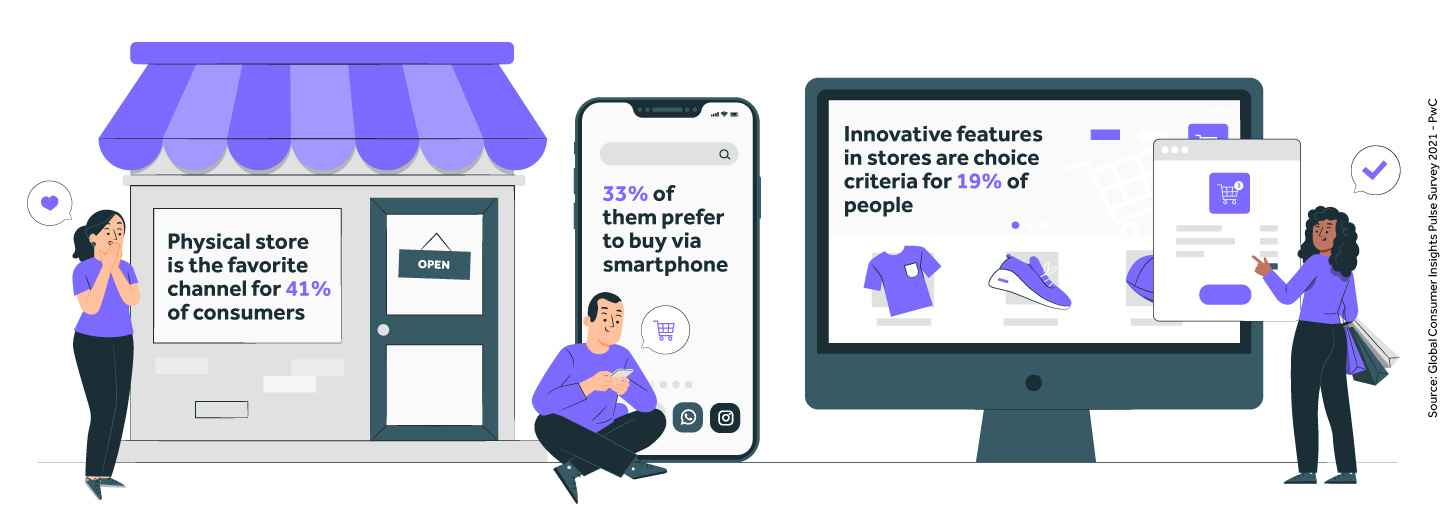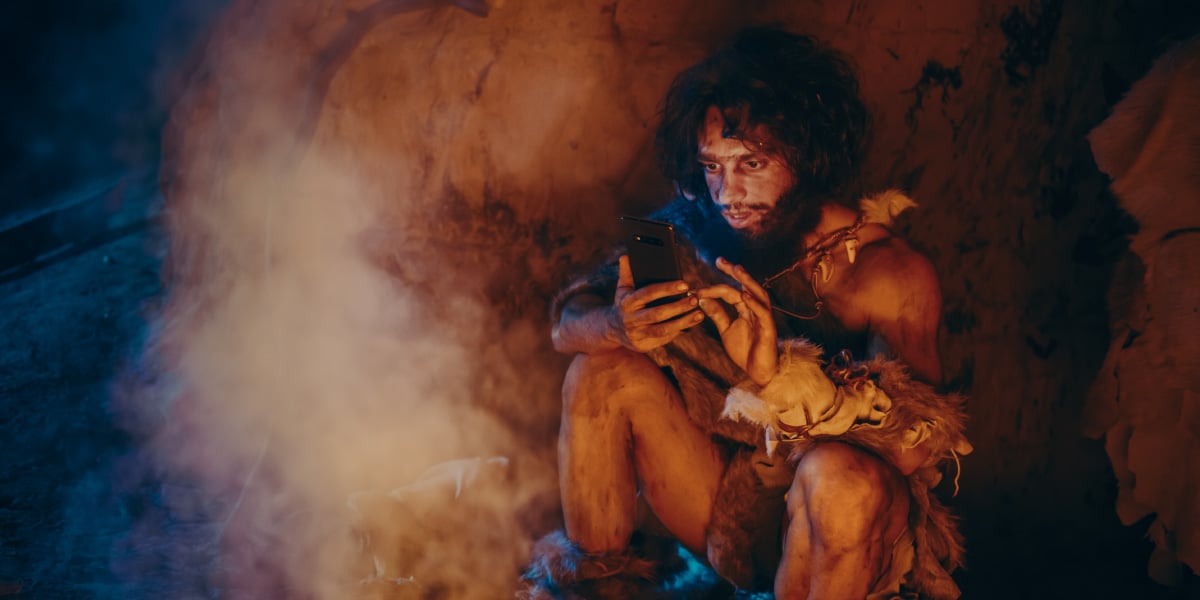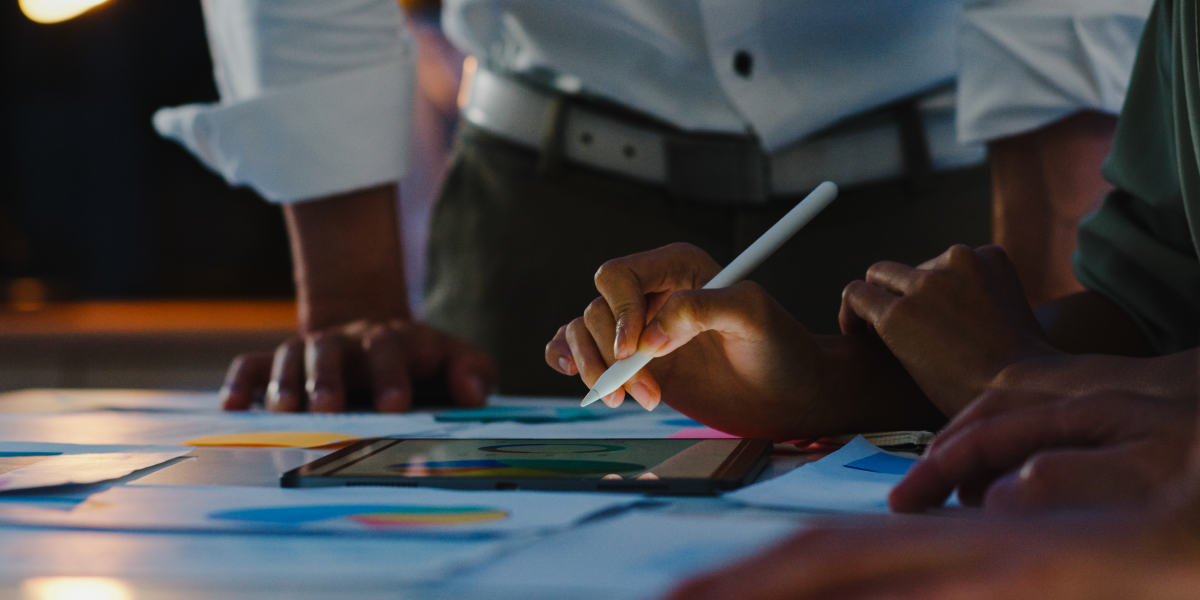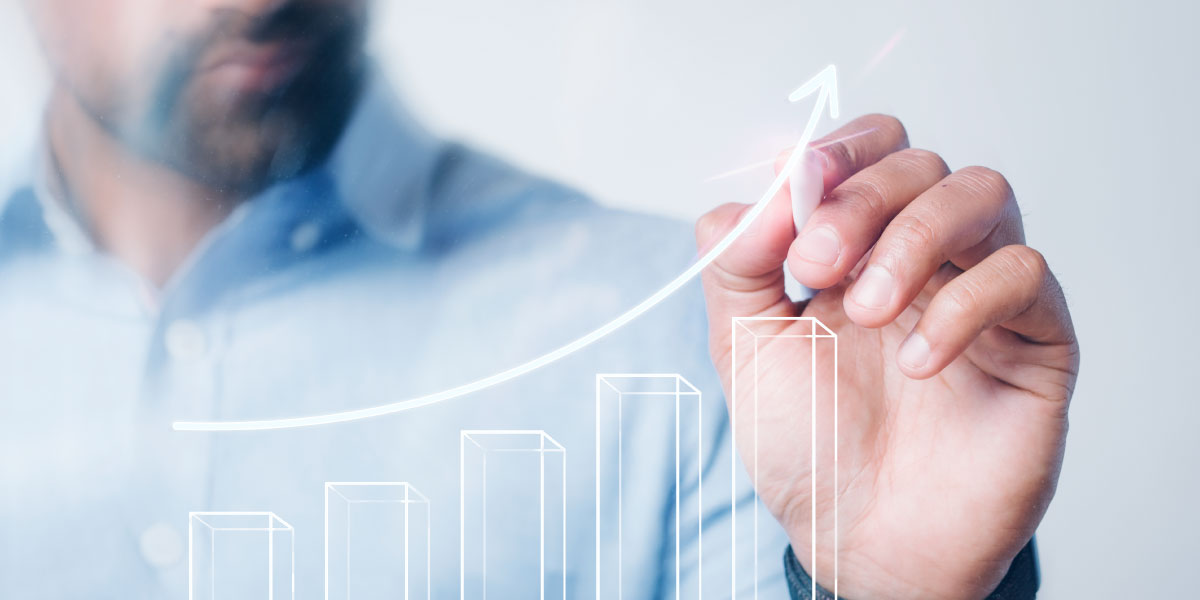Phygital in retail: technological solutions for the sector's future
 Zoox Smart Data - 20 de August de 2022.
Zoox Smart Data - 20 de August de 2022.
At the beginning of Covid-19 and even a little before it, a different epidemic was spreading: the consumers empowerment and their awareness of being able to receive everything they need at home with just a few clicks.
However, with isolation lasting months, we all end up asking ourselves: is this really what I want forever? In many cases, the answer is "no". In fact, each experience has its own particularities, and what this movement has made clear to retailers is that you need to invest in phygital experiences.
In digital, you can't feel the texture of a fabric, smell a perfume, or have a face-to-face conversation with an expert to support your shopping decision. On the other hand, it is still not common in the physical experience to make payments without standing in line or to find exactly what you are looking for just by typing the product name in a search bar.
Thus, it is easy to see why the marriage of the two experiences is so attractive to the consumer. That is why we have prepared this content with a series of information that proves why the future of the retail sector lies in phygital and how some technologies already available today make it possible to follow this path.
What is phygital?
Consolidated today as a kind of mainstream among technology companies and in innovation events for the retail sector, the term phygital represents the concept of transforming the consumer experience in the physical space of stores through the adoption of different technological resources that add the advantages provided by e-commerce.
Although it is not possible to map with absolute certainty the origin of the term, phygital entered the retail sector debates for the first time in 2015, when Kevin McKenzie, vice president of the Westfield shopping mall chain, used it in his speech at the NRF Big Show 2015, a global retail innovation event.
At the time, he exemplified the concept by describing consumers who even inside the store use their smartphones to read reviews and specifications of the product in front of them or even search for better prices in e-commerce, thus creating a challenge for stores to create interesting experiences from this trend.
In the United States, trend was the theme of a Amazon campaign in 2019
Phygital in retail: impacts on the sector
Despite the robust strengthening of digital shopping during the pandemic, according to Neotrust research, e-commerce will generate R$ 161 billion in sales in 2021. Today it is already possible to see that it will not cause the absolute end of physical stores, since they remain the favorite for many consumers.
According to PwC's Global Consumer Insights Pulse Survey, the physical store remains the preferred channel for everyday shopping, with 41% of global shoppers' preference, followed by smartphones, which are the most used medium by 33% of respondents.
On the other hand, 19% of respondents say innovative features such as self-service checkouts, virtual mirrors and digital product information are an important criteria for choosing a store.

Therefore, the first impact of phygital on the retail sector is how consumers tend to value stores that embrace this mindset, making it a must-have for many segments in the future. In this perspective, the differentiation offered by stores needs to disconnect from product X or Y and focus on the consumer experience, as we have already covered in this other article.
Store's Experimental Kitchen Space - Facebook Casas Bahia
One example that has embraced the phygital concept is the Casas Bahia mega store located on the Tietê waterfront in São Paulo, which opened late last year. With more than 9,000 square meters, the space is entirely focused on providing experiences for clients, with a mini movie theater, space for culinary activities, and a gamer arena. The place will serve as a kind of digital innovation lab for physical stores, with the best ones being implemented in the future in other units of the chain.
Phygital and the consumer journey
The second impact is the requirement for retail companies to gain deep insight into the buyer journey of the consumers they are engaging with.
Even in cases where the consumer enters the store and makes a purchase quickly, they have probably done a lot of research online prior to that decision. Similarly, the person may have a first contact with something of interest in an unpretentious trip to the mall and end up making the purchase online.
These paths need to be clear to any company that wants to win the sale before the competition. In other words, it is indispensable to collect data to build a 360º vision of your customer. After all, in the fight for the client, the winner is the one who sends the most personalized offer and at the exact moment the consumer expects.
In the Casas Bahia example, the mega-store monitors behaviors and interests of each person who enters the store through multiple technologies, such as a digital map accessible via QR Code. Some of the activities made available to consumers reward them with discount coupons for the app, an extra incentive to make the sale in the retail chain's own digital environment.
Apple Store Fifth Avenue - Disclosure: Foster + Partners
This is also the proposal of the Apple Store located on Fifth Avenue in New York City. With green décor, natural lighting, and comfortable furniture, the space delivers much more of an experience of a quiet corner in the middle of the city to relax and get to know the company's new products than that of a store itself. Salespeople assume the role of consultants, and even uncompleted transactions are not considered lost, as the purchase journey continues through the brand's digital contact with users.
Wi-Fi and customer experience management
The third impact, in fact, is a consequence of the other two, and directly involves the implementation of technologies that allow you to build phygital environments, create 360° view of customers, and manage their experience throughout the purchase journey.
From this perspective, Wi-Fi is an indispensable tool for all phases of this process.
Through it, users can use their own smartphones to live these experiences designed for store spaces and, in turn, provide a universe of data about themselves that will drive the creation of a complete view of them, resulting in super personalized offers.
Offering these kinds of solutions and making Wi-Fi the fuel to generate the data you need to bring phygital to life is our specialty here at Zoox. From Smart Wi-Fi to our Zoox Eye Data Science & Analytics platform, we help your company get to know your customer better, make more accurate decisions, and manage their buying journey in a super personalized way.
Want to start having success in this path towards the retail of the future?
Schedule a free demo with one of our experts.






Comments